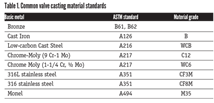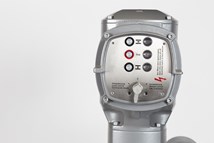A Conversation with Ravi Krishnan on Doing Business in India
Although this year’s Market Outlook had its share of gloomy news regarding international economic woes, a bright spot in many of the speakers’ comments was India.
#VMAnews
The country now has one of the highest Gross Domestic Product (GDP) growth rates on the globe (about 7.5% to 8% at the time of the market outlook), with a strong demand for flow control and a current market of about $2 billion in valves, according to outlook speaker Ravi Krishnan, president of Krishnan and Associates.
Krishnan’s company is a technical and energy consulting firm located in the U.S. that specializes in helping countries here with their dealings in major Indian industries such as power and infrastructure. Krishnan himself was born in India, though he has made his home here in the U.S. for the last 20 years.
According to Krishnan, the growth that has occurred in his native country has not been without its challenges.
For example, “India still deals with infrastructure problems,” Krishnan explained. “There are many regions that are very well developed with manufacturing activities running smoothly. But there are other parts of the country with shortages of labor, power supplies and other essential commodities needed for a successful business operation,” he adds. Finding skilled labor or contractors skilled in western standards to execute a job can also be a challenge, as can finding the right equipment, he said.
Still, in the six years since starting his consulting business, he says an enormous change has occurred in the business world and that change permeates the Indian culture.
“The Indian entrepreneur of today is lot different than the businessman of the 1990s. Today’s companies have access to capital, knowledge of the technology, access to resources, and they have learned to do business in a global environment,” Krishnan says.
That is a critical development for anyone who wants to do business there because to be successful as an outsider requires forming good partnerships and cooperative arrangements with people and companies on the inside, he points out.
Other Challenges
One of the reasons good partnerships are so critical is price sensitivity within India’s borders, Krishnan says. “The government and industry in general have a high focus on low capital costs, even if it means moderately higher life-cycle costs,” Krishnan explains. Competition for technology is tough in India so “suppliers to the Indian industry may have to either set up operations in low-cost regions of the world such as Viet Nam or China or try to manufacture the products or most of the components of the products in India itself,” he said.
However, it does not mean quality isn’t important or is not receiving increased attention as the country learns the hard lessons that come from buying cheaper products and finding out how unsafe they can be or how expensive short life cycles can be.
“Today, you can go into that country at higher prices if you have a premium product, but it has to have demonstrable value,” he said. In the case of valves, that translates into efficiency or performance improvements over standard commodity valves.
But this value also needs strong intellectual property (IP) protection.
“Products that come into India that don’t have a strong IP position could easily be reverse engineered,” he said. At the same time, Krishnan pointed out that the country has come a long way in this area. “There has been a lot of progress in relation to IP issues in India’s court system, though damages awarded there might not be as high as in western markets,” Krishnan says. The country has aligned itself with the World Intellectual Property Organization and has patent offices in its major cities with a system design to protect both domestic and foreign technology—all of which “are positive trends towards enforcement of stronger IP situations,” he said.
Finally, a requirement for success in India is learning to recognize cultural issues with respect to the working environment.
For example, “in a small village, if there is a safety or environmental incident at a plant site, it’s likely to start a riot if a person is hurt—these issues could delay project schedules and construction activity,” Krishnan says. The country feels strongly about its communities, local customs and labor relations.
For all of these reasons, “it’s a good idea to enter the country through a joint venture, a licensing arrangement, an agency relationship or some other form of collaborative partnership with parties that know how to deal with local manufacturing issues, personnel issues, sales and marketing issues, plant siting or construction or project management issues,” he concludes.
Genilee Parente is managing editor of Valve Magazine. Reach her at gparente@vma.org.
RELATED CONTENT
-
Standards for Actuator/Gearbox Flanges
“Many variations in valve and actuator dimensions and characteristics have come into play especially now that we have worldwide vendors,” said Paul Souza, training manager at AUMA Actuators in a presentation at the Valve Manufacturers Association Virtual Valve Forum in November 2020.
-
New Valve Stem Packing Design Makes Reducing Fugitive Emissions Easier
Fugitive emissions commonly occur in the plant environment through equipment leaks, flaring, evaporation and spills.
-
CASE STUDY: Stainless-steel Piping Solutions for Remote Mine Sites
Stainless-steel piping has a long history on mine sites. The robust, corrosion-resistant material is ideal for mine process piping systems that are designed to provide a long service life.










 Unloading large gate valve.jpg;maxWidth=214)